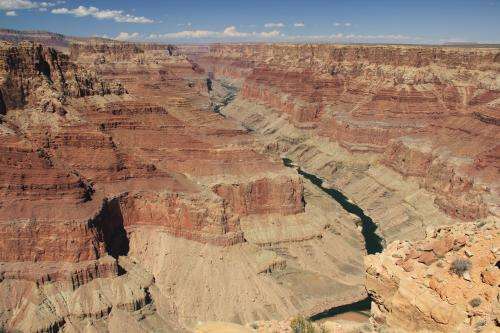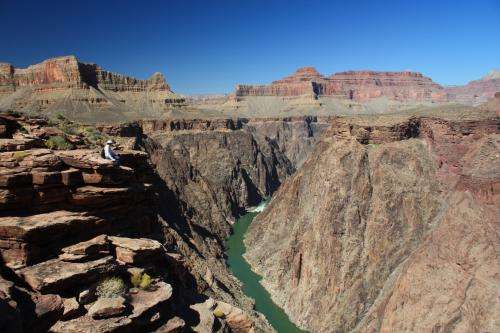Something old, something new... Grand Canyon surprises

The Grand Canyon as we know it was formed between five and six million years ago, which is youthful in geological terms, but parts of it could be as old as 70 million years, scientists said Sunday.
Experts have debated for nearly 150 years about the age of the canyon, wrangling over how long it took for the grandiose feature to be gouged out by the Colorado River and its tributaries.
Reporting in the journal Nature Geoscience, researchers in the United States said they had dated rock samples from the length of the 446-kilometre (277-mile) canyon and used computer simulations of the topography in their new appraisal.
Two middle sections, called the Hurricane segment and the Eastern Grand Canyon segment, were formed between 50 and 70 million and between 15 and 25 million years ago respectively, they believe.
But two other sections are far younger—they were carved out only between five and six million years ago.
Their creation linked up all four segments, forming a single canyon.
Today, the canyon averages about 1,230 metres (4,000 feet) in depth, falling to around 1,850 metres (6,000 feet) at its deepest point and 29 kilometres (18 miles) at its widest.

"Although parts of the canyon are old, we concluded that the integration of the Colorado River through older palaeocanyons carved the Grand Canyon, beginning five to six million years ago," said the study, headed by Karl Karlstrom, a geologist at the University of New Mexico at Albuquerque.
The paper reconciles two schools of thought.
One theory saw an "old" Grand Canyon that was formed as long ago as 80 million years, while the other argued for a "young" canyon five million years old.
More information: Paper: dx.doi.org/10.1038/ngeo2065
Journal information: Nature Geoscience
© 2014 AFP



















